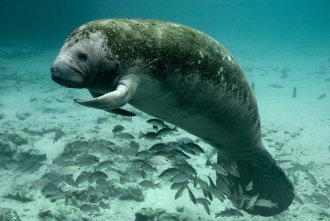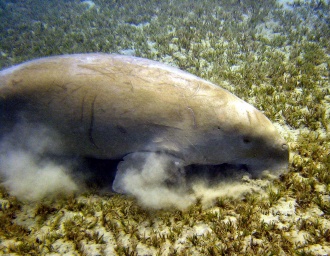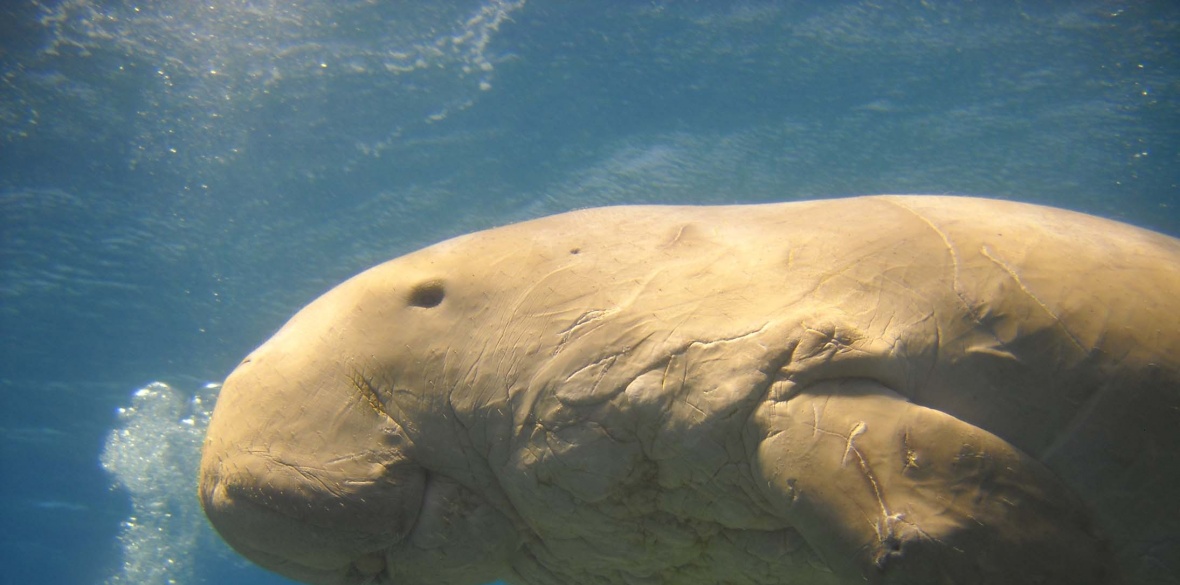This is the last article you can read this month
You can read more article this month
You can read more articles this month
Sorry your limit is up for this month
Reset on:
Please help support the Morning Star by subscribing here
AS YOU sail into Copenhagen harbour in Denmark, you spot its famous Little Mermaid statue.
My reaction, like everyone else I’ve spoken to, is that the statue is much smaller than you expected. “Much smaller than a real mermaid,” I hear them say. Real mermaid. Urgh?

The Disney Corporation owes almost as much to its Little Mermaid as it does to a duck called Donald and even its crazy mouse called Mickey.
My wife Ann and I have boated in the Florida Everglades and most interesting among the many strange creatures which inhabit these alligator and crocodile-filled waters are the manatee.
Manatees are large, fully aquatic, mostly herbivorous marine mammals, sometimes known as sea cows.

There are three accepted living species of manatee: the Amazonian manatee (Trichechus inunguis), the West Indian manatee (Trichechus manatus) and the west African manatee (Trichechus senegalensis).
Manatees can measure up to 13 feet (4m) long, weigh as much as 1,300lb (590kg) and have paddle-like flippers.
Manatees are pure plant eaters and eat over 60 different freshwater and saltwater plants. Manatees inhabit the shallow, marshy coastal areas and rivers of the Caribbean Sea, the Gulf of Mexico, the Amazon basin and west Africa.
The main predators of manatees are we humans. We are destroying its habitat. Their slow-moving, curious nature has led to violent collisions, often fatal, with propeller-driven boats and ships.
Now disastrous news has come from China. A close relation of the manatee — and another inspiration for the widespread mermaid legends — the dugong has been declared extinct.
China too has many mermaid-related legends in art, music and literature, all inspired by the dugong — China’s close relative of the manatee.
In the last few weeks Chinese researchers have declared the dugong extinct in China. Only three people surveyed from coastal communities in China have claimed to have seen the dugong in the past five years.
One of the ocean’s most gentle giants, the dugong’s slow, relaxed behaviour has made it vulnerable. It has been destroyed by overfishing and shipping accidents, just like its close relatives all across the globe.
Dugongs are the only completely marine mammal that has a diet consisting solely of sea grass. The manatee also only eats plants but they can also be found in freshwater areas.

Sea grass, one of the most important plants in storing carbon, is itself under threat all over the globe. The diminishing forests of sea grass have caused many marine animals to be under threat of extinction.
Believe it or not, the closest land relative to the Chinese dugong is the elephant.
Dugongs still exist elsewhere in the world outside China but the species is facing similar threats wherever it makes its home all across the globe.
Prof Samuel Turvey, from the Zoological Society of London (ZSL), who co-authored the recent research study that announced the dungong’s extinction in China, told us: “The likely disappearance of the dugong in China is a devastating loss.”
The professor and other scientists at ZSL and the Chinese Academy of Science reviewed all historical data on where dugongs had previously been found in China. They found there had been no reliable verified sightings by scientists since 2000.
In addition, the researchers turned to citizen science. They interviewed 788 community members living in those coastal regions identified, to determine when local people had last seen any live dugongs.
On average, the local residents reported not having seen a dugong for 23 years. Only three people had claimed to have seen one in the past five years.
This has led the researchers to declare the dugong functionally extinct — meaning “it is no longer viable … to sustain itself,” Heidi Ma, postdoctoral researcher at ZSL, said in a BBC TV interview.
Dugongs use sensitive bristles on the end of their snout to feed on seagrass. The location of the seagrass forests close to shore in China left it vulnerable to hunters in the 20th century who sought the animal for its skin, bones and meat.
After a notable decline in population, dugongs were classified as a grade-one national key protected animal by the Chinese State Council in 1988, along with the much more famous giant panda.
The dugong habitat — including a lack of seagrass beds for feed — has caused a “rapid population collapse.”
The UN Environment Programme estimates that 7 per cent of seagrass habitat is being lost globally every year because of industrial and agricultural pollution, coastal development, unregulated fishing and climate change.
Prof Turvey said the dugong’s extinction in China should act as a warning to other regions that also have populations of dugongs — including Australia and east Africa — calling it “a sobering reminder that extinctions can occur before effective conservation actions are developed.”
Dugongs are still to be found in 37 other tropical regions of the world — in particular the shallow coastal waters of the Indian and western Pacific Oceans — but is classified as vulnerable on the International Union for the Conservation of Nature’s (IUCN) red list of threatened species.
Kristina Gjerde, high-seas policy adviser for the IUCN, told us: “The dugong is a sad example of what is happening to the marine environment where there is increasing encroachment of human activities.”
The mermaid of romantic fable and the real species that inspired her many legends deserve our attention and protection. Not just on colourful children’s bed linen or kid’s TV channels but in the world’s oceans and particularly its huge but declining seagrass forests.








